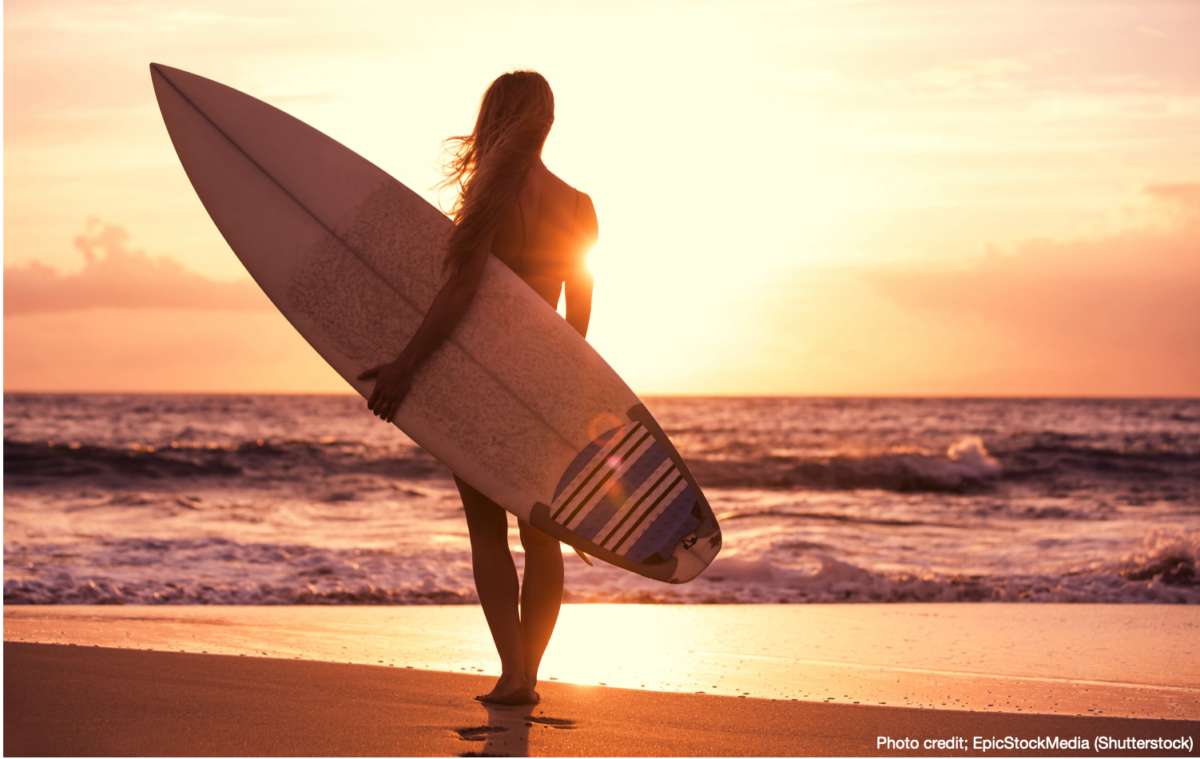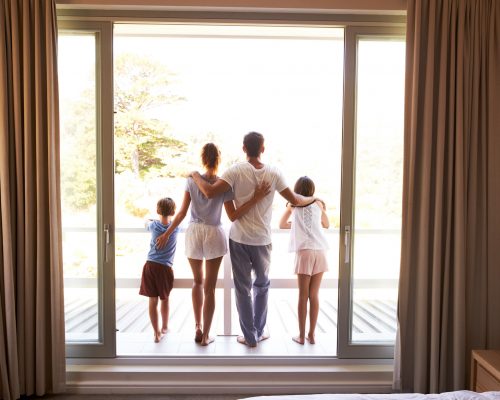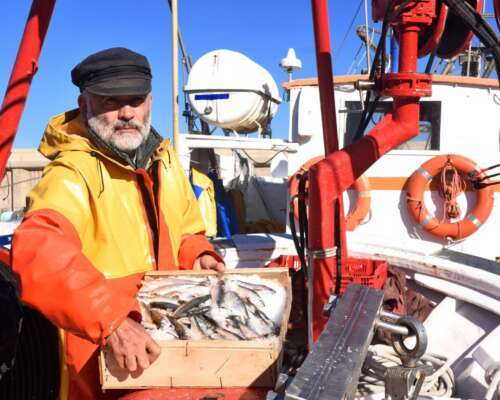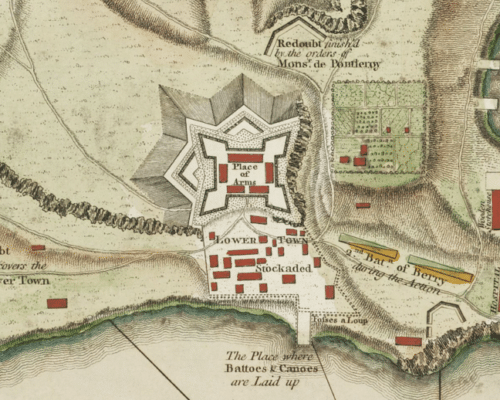My wife and I decided a year ago to join our son, daughter-in-law and two grandsons on a vacation for ten days on Oahu. We purchased two tickets to paradise. We hoped to find a “window” between surges in the Pandemic and we booked a stay at the Hale Koa, a military hotel, which was actually a much nicer facility than the adjoining Hilton (See information at the end of this post.) We flew to LAX, dodging bad weather in the Dallas area and from LAX we arrived the next day in Honolulu. It was a grueling flight but well worth it.

The Enchanted Isles
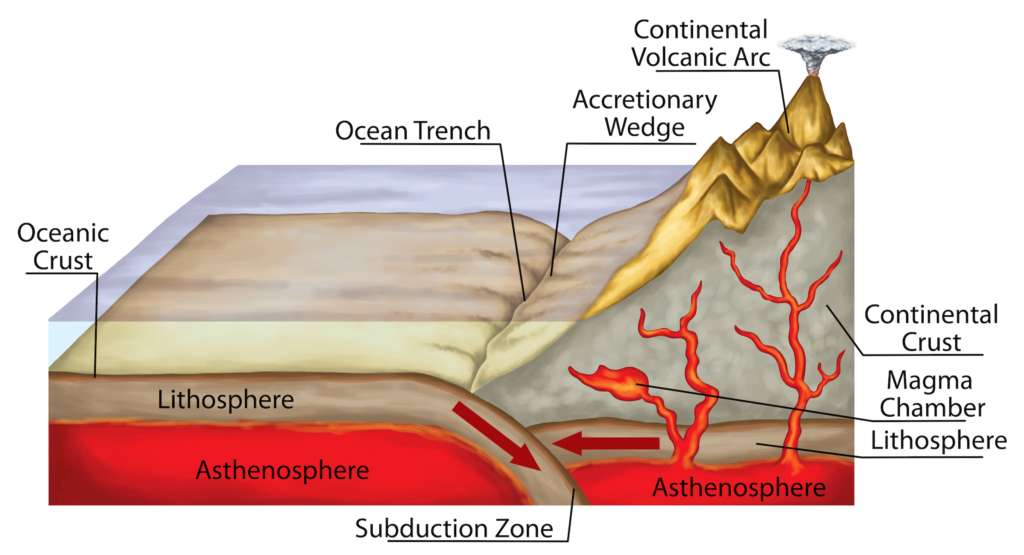
There was a time the islands did not exist. Scientists tell us that long ago there were ”hotspots” in the Pacific Plate. The term “plate” refers to the dozen or more often continent-size plates that comprise the lithosphere of the planet, upon which oceans and landmasses rest. When these plates bump and rub against each other, energy from the sudden release of the tension produces what we know as earthquakes. The hotspots represent thin areas of the plate and allowed magma (liquid rock) to seep out and aggregate on the ocean bed, eventually forming land. This, of course, occurred over time. The oldest of the largest eight islands in the chain are those to the northwest. The fire and heat from their volcanos has long since been extinguished. The youngest of the islands are Hawai`i (referred to as the “Big Island”) and Maui, and that’s where the active volcanos are to this day.

So, the islands are basically the remnants of volcanoes which emerged from the deep, and only two of the islands have active volcanoes, including the largest active volcano in the world (Mauna Loa at two and one half miles above sea level.) Oahu, the island we visited therefore, does not have any active volcanoes, but the vestiges of past volcanic action remains. For example, the Hālona Blowhole which is located just north of Hanauma Bay on the Kalanianole Highway which can be seen at some distance away.
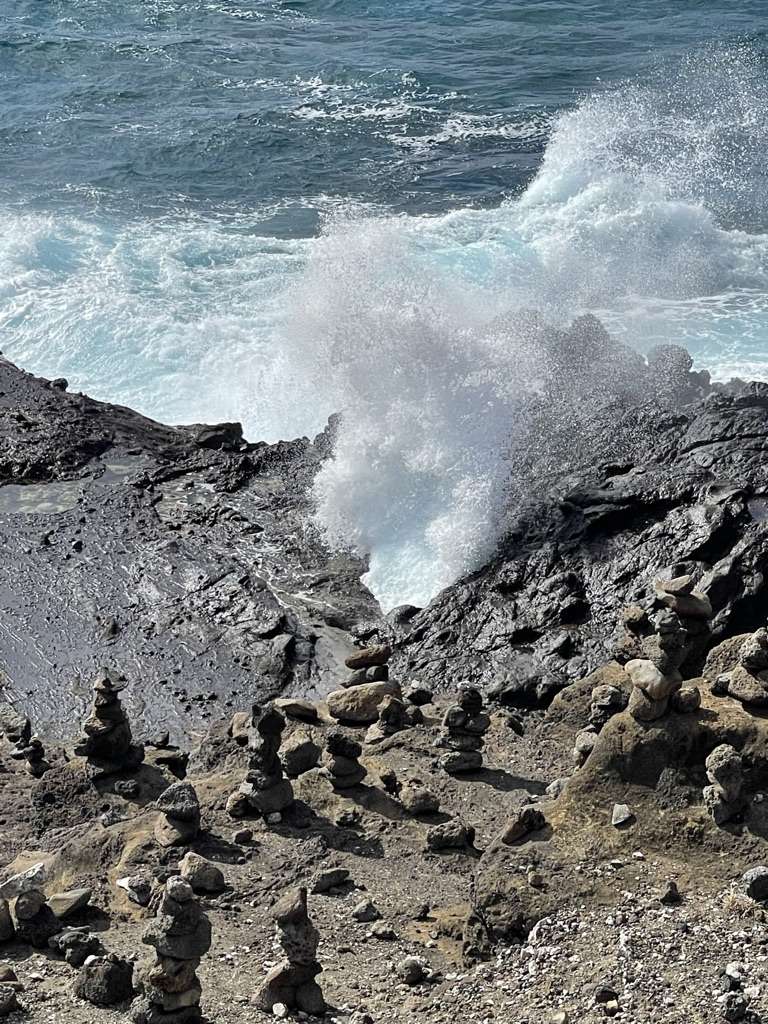
The Hālona Blowhole channels the surf through a volcanic tube created by lava and forces the water thirty feet into the air, dozens of times each minute. When you are at the blowhole and look to your right, you’ll see a familiar cove (the Halona Beach Cove) where famous love scenes were filmed, such as in the movie “From Here to Eternity.”) This whole general area is often populated by the green sea turtle. The best way to locate them is look for groups of a dozen or more people standing on the shore line pointing to the surf. These are tourists and residents watching the turtles surface briefly as they search for food.
The whole beach scene seems surreal in some ways. But there are crowds of people who visit it daily. Good luck trying to find a place to park.

Origins
People from Polynesia are thought to have traveled at great distances to populate the islands, as early as many centuries before Christ. Little is known of these predecessors or the numerous tribes that
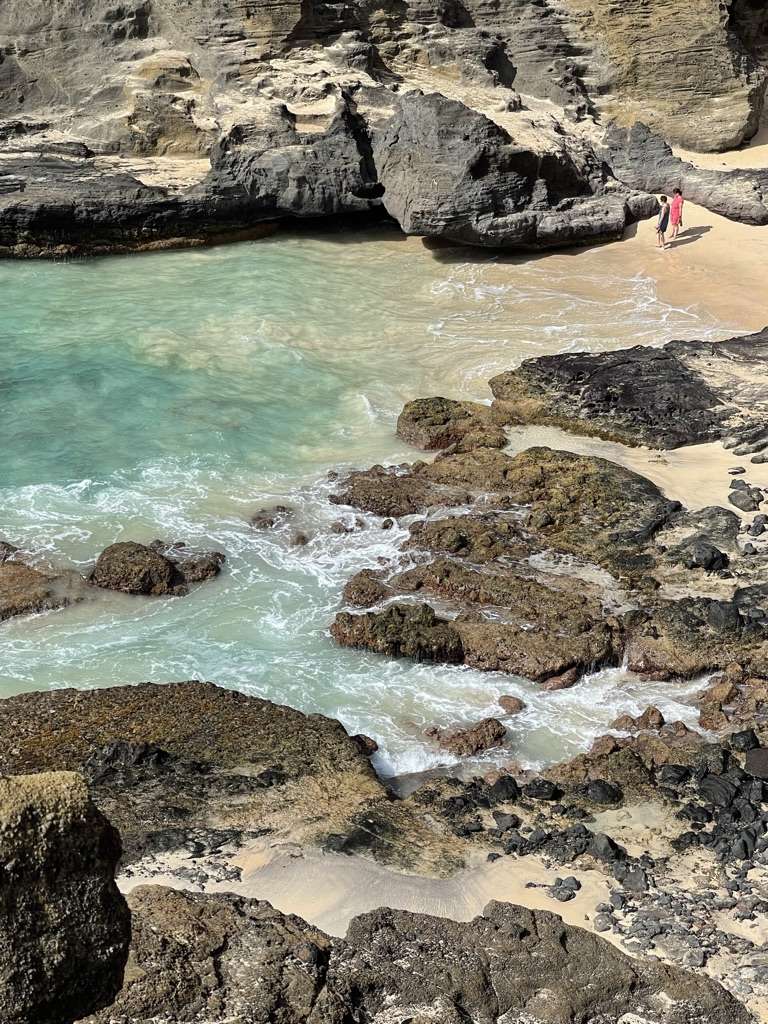
formed until the arrival of British explorer Captain James Cook in 1778. Dieseases known to Europe and North America followed in his wake as the islands became a stopover for traders, whalers, and other entrepeneurs. In 1795 King Kamehameha the Great of Hawai`i conquered the islands of Maui, O’ahu, Molola’i and Lānaʻi and consolidated these islands into one kingdom. By 1810, the Kingdom was recognized as a nation in its own right, with a flag that includes the British Union Jack. This flag flies proudly today across the islands. In 1893, Queen Liliʻuokalan was deposed by U.S Marines who invaded at the instigation of Sanford B. Dole and Hawaii was annexed to the U.S. The coup d’état was just another example of American capitalists manipulating the U.S. administration at that time to come to the rescue of their business interests. This had been repeated more than once in either Central or South America and perhaps elsewhere as well. When I learned of Dole’s intrigue against the native people of the islands near the end of my trip, I was glad we had not visited the Dole Plantation while in Oahu.

Outdoor eating at its best
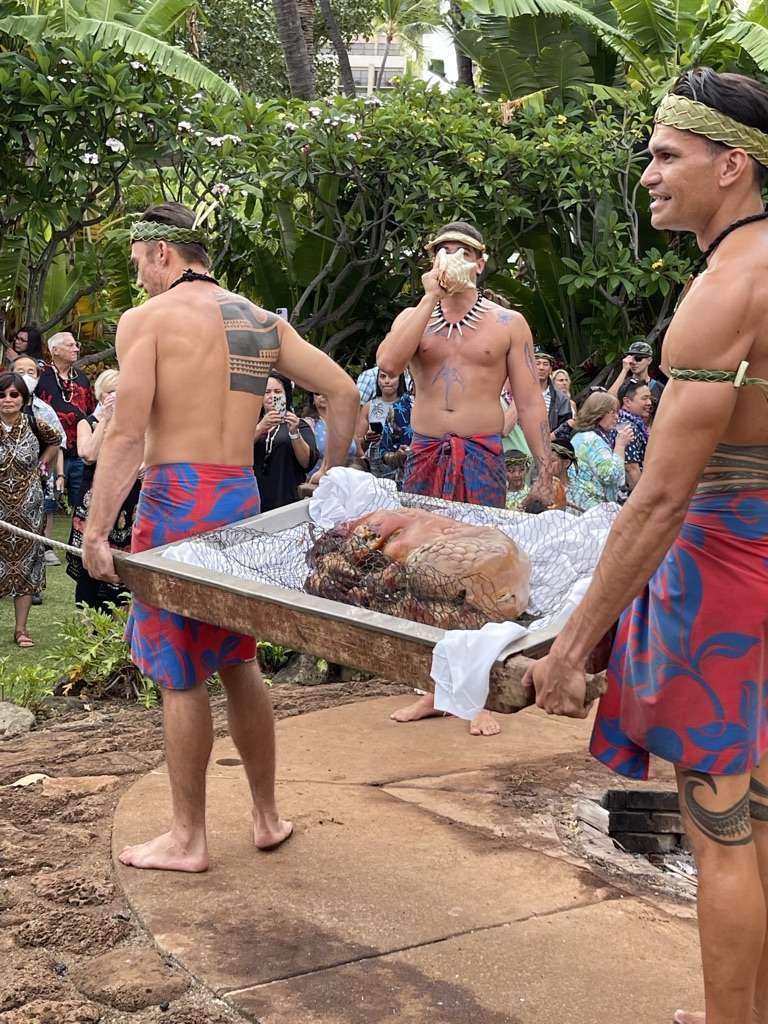
When you land at the Daniel K. Inouye International Airport, you immediately notice that much of the airport is exposed to the elements, with neither heat in the winter nor air conditioning in the summer. This open-air motif is also present in hotels and restaurants. The more popular restaurants were the Kona Brewing Company, Dukes Waikiki, the Hawaii Kai, and The Pig and the Lady, and we went to all of them. While the Pig . . . was not outdoors, the other two were both indoors and outdoors. Expect food including ribs and pulled pork, fish including blue marlin, and prime. The compliments include essentially the same vegetable mix of squash, pickled veggies and your “choice of starch” which means rice or potatoes. But it’s all good, and the deserts are outstanding in particular.
While staying at the Hale Koa, we experienced a luau, with classes on everything from making lei to climbing palm trees to get coconuts. The team also demonstrated how to roast a pig Polynesian style using banana leaves, burlap and chicken wire. The “oven” is a dirt pit several feet deep.

Mahalo for not feeding the chickens
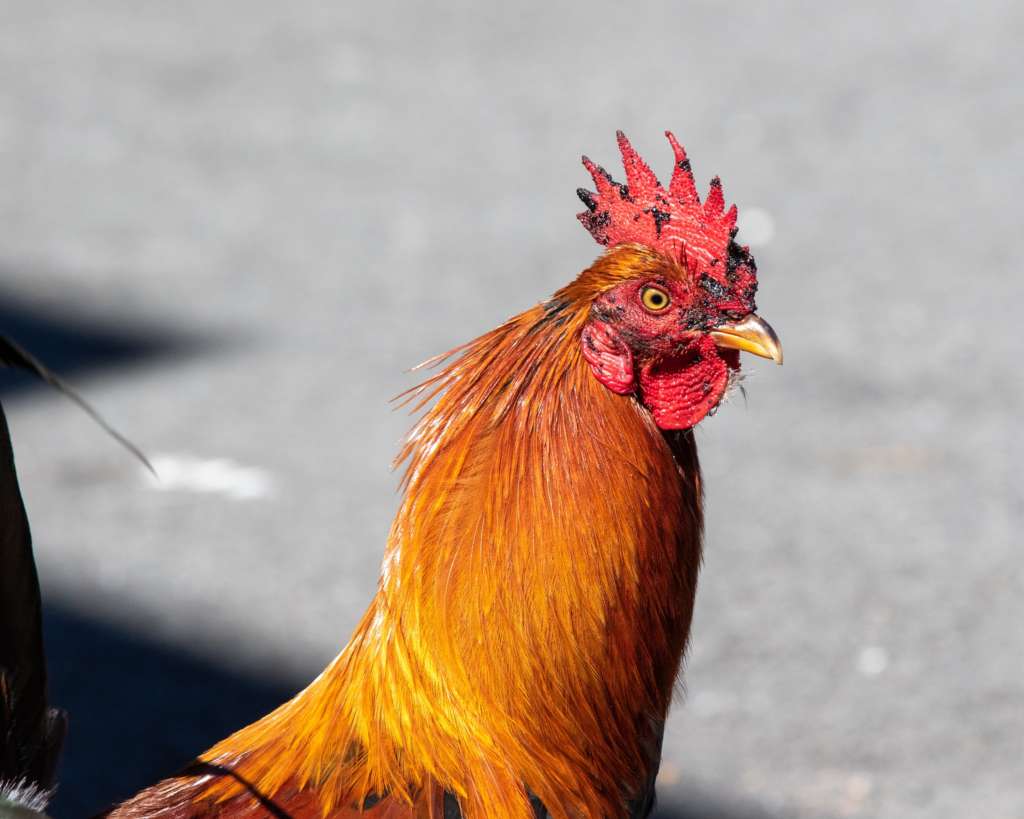
New York City, Miami, Chicago, Austin and LA all have pidgeons. Honolulu has feral chickens. They are on the lawns, along the roads, in parking lots and at the beach. You can step out on the balcony of your hotel at sunrise and hear roosters crowing to the 347,000 sleeping inhabitants of the capital city. Where do they all come from? Well, rural kānaka who commute to Honolulu have observed them riding the morning busses from the country side, but they are rarely seen on the afternoon return routes. Perhaps the chickens find the bus schedules too confusing, or maybe they just enjoy Honolulu more than the countryside. Meanwhile, roosters, their hens and their broods run between your legs as you eat breakfast, lunch and dinner (most restaurants have large outdoor areas or open indoor areas for diners.) If you turn your back briefly while at your table or get distracted talking to the waitress, they might try to steal your food. So you notice, and appreciate, signs that say “Mahalo for not feeding the chickens.” Mahalo is the Hawiian word for “Thank you.”

A memorable Memorial Day weekend.
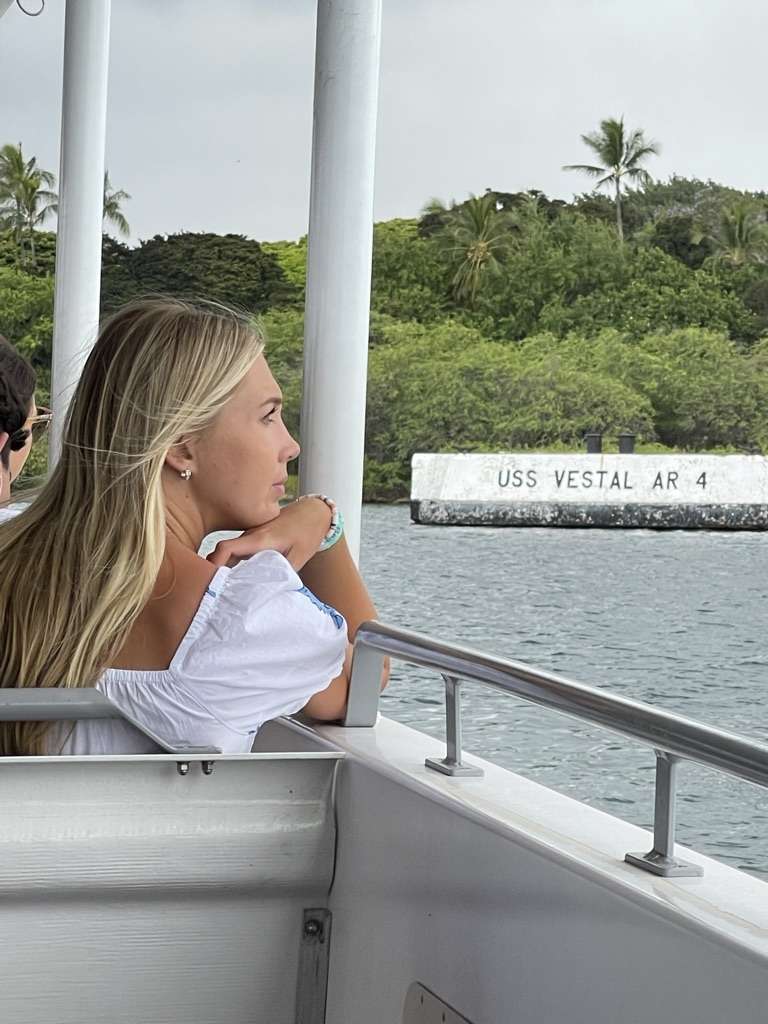
We visited Pearl Harbor and the USS Arizona the day before Memorial Day, a most fitting (and solemn) occasion. You had to get tickets well in advance. There was an optional movie presentation in a theater on the pier across the harbor from where the ships were berthed on December 7, 1941. At a certain time, groups of fifty or so people were ushered into a ferry boat and U.S. Navy personnel piloted the boat to the memorial.
The Arizona was completely refueled shortly before the attack. As a result, up to nine quarts of oil continue to seep into the harbor each day.
Pearl Harbor was attacked on December 7, 1941 by several waves of Japanese planes, their torpedoes fitted with special wooden fins in order to work properly in the shallow waters of the harbor.A total of 2,403 Americans were killed that day along with 1,178 wounded. There were also 129 Japanese soldiers killed. Now, I see people from different nations (including Japan) standing solemnly side-by-side with Americans wearing caps that identify them as veterans. Only three hundred feet away is the USS Missouri, the ship where less than four years later the Japanese government would sign an unconditional surrender. The presence of the Missouri closes a loop, with the ruins of the Arizona representing the beginning and the Missouri representing an ending.

The Hale Koa hotel
The Hale Koa (trans: “House of Warriors”) is a hidden gem for service members and their families (or at least I never heard of it while serving in the military.). Even the Hilton next door does not offer better accommodations.

The Hale Koa first opened its doors for business on October 25, 1975. Since then, more than one millions patrons and guests have visited the hotel and occupied its 817 rooms in a typical year. During the nineteenth century, the grounds of the future hotel were characterized by fish ponds and taro patches. In 1906, the War Department acquired 72 acres which became the site of Fort DeRussy. The ponds were filled in and the acreage was transformed into solid ground. Originally designed for the defense of Honolulu, Fort DeRussy became a rest and recreation area in 1950 for soldiers fighting in Korea and Vietnam. Today, rooms are priced according to the guest’s pay grade (with lower ranking enlisted enjoying the lower rates), and there is no discrimination in accommodations between officers and enlisted. Currently rates per room run from $149 to $394 per night. Here are some of the categories of authorized guests:
- Members on Active Duty, Reserve and National Guard, Army, Navy, Air Force, Marine Corps, Space Force, Coast Guard and Cadets of Armed Forces Academies.
- Retired from Active Duty, Reserves, and National Guard with or without pay (gray area)
- Commissioned Corps, Public Health Service, and National Oceanic and Atmospheric Administration Commissioned Corps.
- Honorably discharged veterans with 100 percent Service-connected disability.
This is only a partial listing of authorized guests. For a complete list, visit this site.
The hotel is quick to point out that there are no public funds used in this program. Every cent needed for daily expenses, maintenance and capital improvements such as their new water park comes from paying guests. For more information on Hale Koa , click here.
The Department of Defense managers similar resorts in the Bavarian Alps, Seoul, South Korea, and Orlando, Florida.

A mainlander’s guide to Hawaiian and Pidgin
Aloha: According to to.hawaii.com, “Aloha is the most Hawaiian word. In the Hawaiian language, it can mean hello or goodbye. It also means love and affection. The word aloha is used in a combination with other words, such as aloha kakahiaka, which means good morning; aloha auinala used as a greeting that means good afternoon; and aloha ahiahi is how you can wish good evening in Hawaiian. Because of aloha’s unique meaning and popularity, Hawaii is called the Aloha State.
Aloha is a Hawaiian symbol. Its meaning goes beyond any definition you can find about it in the dictionaries. In Hawaii, you hear aloha all the time and you are treated with aloha everywhere.”
A hui hou: A hui hou means “until we meet again.”
Blalas: Bruddahs.
Bruddah: Brother.
Haole: A white person.
Kanaka maoli: A native Hawaiian.
Keiki: Child, or in the case of an orchid, a budding branch which can be weaned into a second plant. You’ll see “Keiki menus” when you order featuring child portions of food.
Mahalo. Mahalo is probably the second most important word that visitors should know. It means “thank you.”
Poke: Poke describes a salad of vergetables and raw seafood.
Waina: Waina is the word for wine, though it seems like more people drink mai tais than wine.
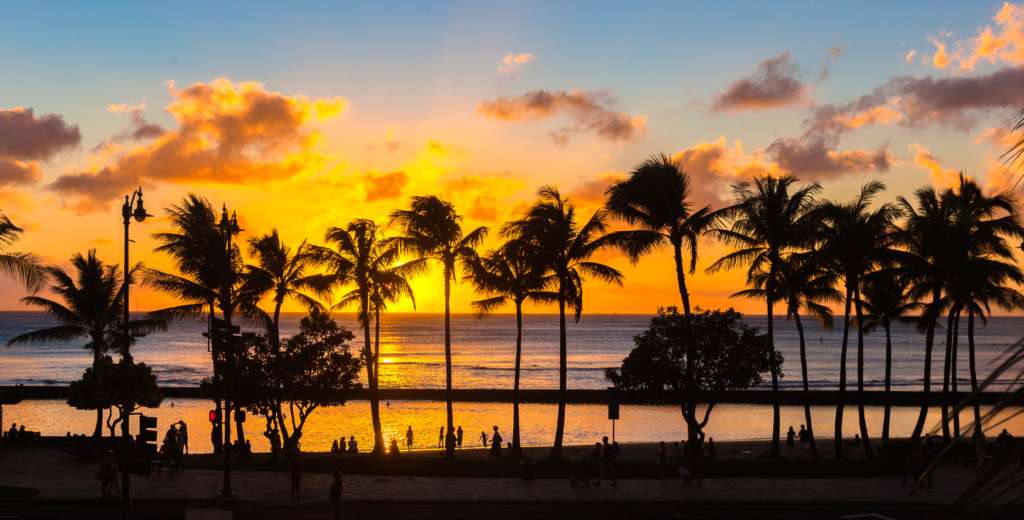
Leis dividers by Shahril KHMD (Shutterstock.)
